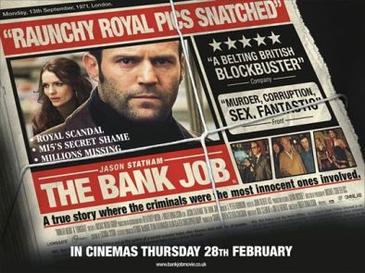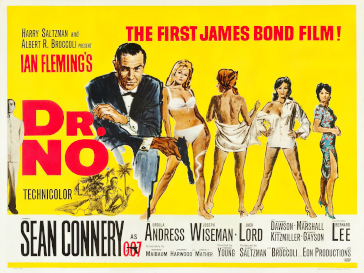Gene Kelly And Fred Astaire Go Mano a
Mano- Kelly’s “An American In Paris” ( 1951 )-A
Film Review
DVD Review
By Senior Film Critic Sandy Salmon
An American In Paris, starring Gene
Kelly, Leslie Caron, music by George and Ira Gershwin, 1951
Someday let me give you the complete
story of how a film critic gets his or her assignments from “upstairs” (unless
of course that person is hard road free-lancing and is just submitting pieces to
publications “on spec”). I should know after some thirty plus years of doing
this type of work recently here and from many years at the American Film Gazette (where I still do on-line reviews and where I
started out as that free-lancer submitting pieces “on spec” when the publication
was strictly hard copy before I was
taken on as a staff member). For now though since I am on a “run” so let me say
that the reason I got this assignment to review Gene Kelly’s An American In Paris (and the next one
which will be on Fred Astaire’s, and Ginger Roger’s, Shall We Dance) is that the editor here, Pete Markin, had grabbed
these two films via Amazon for one purpose and one purpose only-to see who was
the better dancer back in the day -Kelly or Astaire. (There is not even a
question of anybody today touching the hem of either’s skirt since dance kings
are a rare breed and one would be hard pressed to name one male popular dancer who
is even close. Whatever else our disagreements as will be noted below we agree
on that point-to our collective sorrows.)
This no academic question because not
only did Pete go out of his way to view both film he engaged me in a heated
argument one morning in front of the water cooler when he casually laid a
bombshell on me. The bombshell? After years of assuming that Fred Astaire had
the title of king hell king popular dancer wrapped up he had switched his
allegiance to Kelly on the sole basis of this film under review. Needless to
say I had to upbraid him for both his treason and his error. And hence this
“run.” So you see here is a prime example of the odd-ball ways of those high
and mighty general editors in doling out the work. But to the lists.
Maybe An American In Paris with its paper thin
plotline is not the best place to critique Mister Kelly’s dancing (or acting efforts
which whatever faults I find in his dancer they do not compare to his wooden glad
hand acting in this role) but I did not throw down the gauntlet this time. I do
not utter that term “paper thin” lightly here. Here’s the play as my predecessor
and friend in this department Sam Lowell always liked to say. Kelly finds
himself in Paris after the war, after World War II of which he was some of veteran
of although it was probably work in a Special Services unit entertaining
entertainment-starved G.I.s fresh off the front lines with his song and dance
routine. Empathically not after World War I when Paris was the center of the F.
Scott Fitzgerald-dubbed Jazz Age and the period when the Gershwins, George and
Ira, wrote the music and lyrics for the origin concept and which given the
playlist here would have been a better time frame for Kelly’s character, a guy,
a regular guy, named Gerry Mulligan stew to have strutted his stuff. In gay
Paree (gay in the old-fashioned sense of happy, light, and so on not today’s
sexual identity usage) Gerry was doing his best to be a mediocre artist, a
painter (already you can see there is a problem since the transition to dancer
in each routine seems bizarre or his being an artist seems bizarre when he was
at least a better dancer than artist - take your pick). He is getting nowhere
fast in his humble little garret imitation of how he thinks his heroes the
Impressionists suffered for their art. Finally some moneybags “art patroness”
takes up his cause and easy street and high society (which is really a ruse for
trying to get him to fall for her-no dice-no nice dice)
What or rather who he does fall for,
falls hard for, is a little French twist with a turned up nose and who we will
find out quickly is as light on her feet as Gerry is on his on the dance floor.
She gives him the cold shoulder for a while mainly because she is trying to do
the honorable thing for her benefactor and fiancé (and to boot Gerry’s friend too).
As Gerry pulls the hammer down on the romance she softens a bit. But still no
sale until the end when after this serious imaginary dance Gerry has worked himself
up over recreating various paintings by his max daddy artist Impressionist
artists heroes (and a couple of guys from early trends in French art) where he
and Leslie trip the light fantastic she relents. Or rather her lover-benefactor
seeing the writing on the wall brings her to Gerry’s doorstep. Nice guy. So you
can see no way that even the best song and dance man could overcome these
disservices to the Gershwins 1920s be-bop Jazz Age pieces.
Of course this whole dispute, this
tempest in a teapot, brewed up by Mister Markin is not about the qualities of
the storyline but about Kelly’s dancing (and singing too but dancing is enough
to chew on). On the question of pure physical energy and verve Kelly is not bad
reflecting I think the hopped up (maybe drugged up) post-World War II period
when everybody who had slogged through the war was in a rush to get to wherever
they thought they should be going. He has all the moves if not all the grace
that Fred Astaire had in his own prime. And that is really the sticking point
here, the point that became clear during that seventeen minute interlude where Gerry
imagined those painterly scenes from the works of his favored artists. Kelly
was all arms and legs and odd-ball twists and turned but only for a few seconds
during that whole “why the hell is this long scene in this film anyway except
to prolong the film” did he exhibit any grace and that was when he was doing
yeoman’s work lifting Ms. Caron in balletic style. How the usually level-headed
Markin could have called that one of the best dance scenes he had ever seen
tells a lot. Tells me he, he Mister fancy general editor has maybe been at the
hash pipe too long of late. Touché






